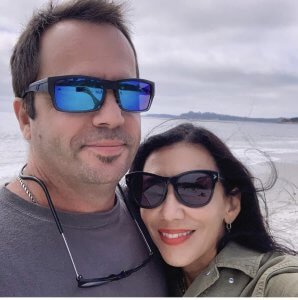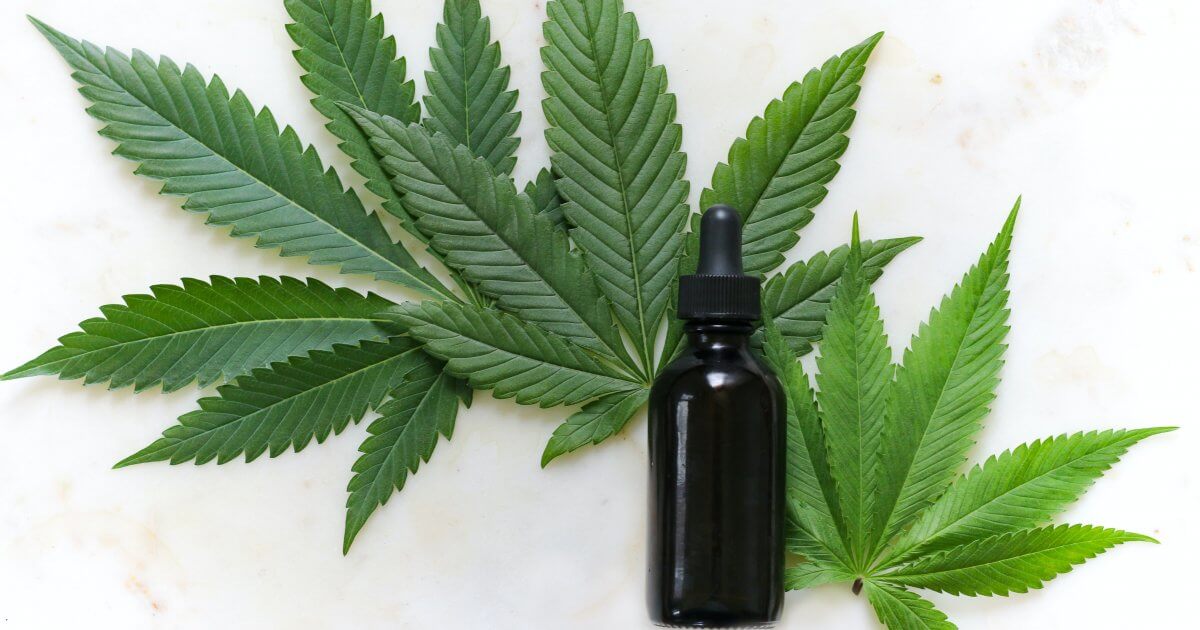Victoria Becomes an Expert in Medical Cannabis
- Over three years, Victoria was diagnosed with pericarditis, Lyme disease, and breast cancer.
- She started reading up on medical cannabis, but research was limited because it was labeled a Schedule I drug with a high potential for abuse and no accepted medical use.
- Experimentation enabled her to find the right doses of cannabis to treat symptoms of cancer and its treatments, such as insomnia, anxiety, and radiation burns.
- There is interest in the use of cannabis to shrink tumors, but there is no medical proof that this works; more research is needed.

Victoria was no dope smoking hippie. Following a successful career as a traditional pharmacist and entrepreneur, she had settled into semi-retirement and was enjoying an active lifestyle that included yoga retreats, biking, and travel. She was happily married to Jason, her high school sweetheart, a race car driver.

3 Health Issues & An Unexpected Source of Relief
Over three agonizing years beginning in 2015, Victoria was diagnosed with pericarditis and then Lyme disease. Cancer struck in 2018. What she couldn’t have known at the time was that her 25 years of training as a pharmacist, her illnesses, and a chance encounter with the teenagers next door would lead to her to become an expert in medical cannabis, and an advocate for its use in treating a variety of conditions, including nausea, radiation burns, and chronic pain.
A Skeptic Gets Curious
Initially, she was very skeptical. "I'd never really smoked pot, maybe a few times in college," she says. During pharmacy school, Victoria had even written a paper disputing that cannabis had any medical benefit. Yet after months of debilitating pain and prescribed narcotics that made her sick, she was desperate. “We asked the kids next door who had marijuana, and they said they had a strain for pain. I tried it… and it worked! It didn't make me high; it just took away the pain."

Victoria started reading up on cannabis. Quality research at the time was scarce, and virtually nonexistent in the U.S., largely thanks to the Controlled Substances Act of 1970, which labeled some marijuana a Schedule I drug, determined to have high potential for abuse and no accepted medical use. As a trained researcher, Victoria knew how to track down and interpret complex medical information, and she found out that Israel had been studying medical cannabis for years.
The Differences Between Pot & Cannabis
It’s important to point out that, while the words "marijuana" and cannabis are often used interchangeably, they are not the same.
Medical cannabis can relieve nausea, increase appetite, decrease pain, and elevate mood, says integrative cannabis physician, Dr. Junella Chin
According to The National Center for Complementary and Integrative Health (NCCIH), the word "cannabis" refers to all products derived from the plant Cannabis sativa. The cannabis plant contains about 540 chemical substances.
The word "marijuana" refers to parts of, or products from, the Cannabis sativa plant that contain substantial amounts of tetrahydrocannabinol (THC). THC is the substance that's primarily responsible for the effects of marijuana on a person's mental state. Some cannabis plants actually contain very little THC, and are therefore legal, because they are considered to be "industrial hemp" under U.S. law. The lack of THC in these plants helps explain why Victoria, and millions of others, have been able to alleviate symptoms without "getting high."
THC & CBD Explained
While THC and CBD may be the most well-known cannabinoids, they are just two of over 100 cannabinoids that the cannabis plant contains. As a trained pharmacist, Victoria knew how to conduct research and pull legitimate information from a wide variety of sources.
"I didn't believe it could be used as medicine until I tried to figure it out, as a pharmacist and a patient… It's a very labor-intensive process that needs frequent tweaking. But when you get it right, it's miraculous.”
She began in-depth studies of the endocannabinoid (ECS) system in the body, and developed an understanding of how terpenes (aromatic compounds in a live plant that oxidize and become terpenoids when dried) and different cannabinoids work with the ECS system to provide medical benefits.
Different Smokes for Different Folks
Dr. Chin tells SurvivorNet how medical marijuana alleviates pain
At the same time, precision medicine was in the news, giving Victoria an idea.
“We all have our own genetic makeup that enables us to process drugs in different ways,” Victoria says. For example, some people can drink coffee and alcohol, others can't. Prescription drugs present the same challenge. Most western medicines are composed of one or two compounds, whereas plant medicine is made up of many components working together to give synergy to the medicine. With cannabis, it is possible to create patient-centric medicines that are specific not only to the symptom, but to each person."
Related: Family, Friends, and Medical Marijuana Karen Balik on How She Got Through Cancer
"I didn't believe it could be used as medicine until I tried to figure it out, as a pharmacist and a patient. I looked at ratios of the components in the cannabis and researched why some strains and combinations worked and others didn't,” Victoria explains. “It's a very labor-intensive process that needs frequent tweaking. But when you get it right, it's miraculous.”
Do Pharmaceutical Companies Make Drugs With THC or Cannabis?
Pharmaceutical companies are making isolates of one compound, usually THC or CBD, as well as synthetic cannabinoids. Taxol, a type of chemotherapy used to treat cancer, and Marinol, a synthetic THC used for pain, nausea, and vomiting, are examples. However, the designation of cannabis as a Schedule 1 narcotic prevents adequate research from being done. Also, it is obviously difficult to monetize patient-centric medicine, which limits its widespread use.
Related: Managing Nausea During Ovarian Cancer Treatment: 'It's Not Like the Old Days'
Cannabis & Breast Cancer
When Victoria was diagnosed with breast cancer, the experience she had gained using different doses and varieties of CBD and THC to treat her Lyme disease symptoms came in handy. The painkillers her doctor had prescribed had made her desperately sick, but she’d gotten relief from her pain using cannabis. Further experimentation enabled her to find the right dose of cannabis to treat her insomnia and anxiety, without getting her “high.”
She did DNA testing and worked with a group of medically trained doctors who specialize in cannabis, as well as other cannabis experts in Oregon, to determine protocols for each of her needs. She began to share her experience online, and word spread. Soon she was inundated with requests from desperate people looking for relief from a wide variety of illnesses. She began offering advice, and her company, SageLife, was born.
Her Oncologists Were Stunned by the Results
Victoria's oncologists at Providence Hospital in Portland were very supportive of her use of cannabis. They were stunned by her results, especially when she used cannabis oil to treat her radiation burns. “My skin was black and blistered. Three months post radiation I was completely healed,” she says.
Related: New Harvard Research Finds A Chemical In Cannabis Can Help Fight Pancreatic Cancer
Cannabis & Tumor Size Reduction
While there is great interest in the use of cannabis to shrink tumors, Victoria is cautious about prescribing it. "I don't advocate using cannabis as a tumor reduction strategy unless someone is coming to me with little hope and has nothing to lose. It is incredibly complex. There are 100 cannabinoids in cannabis, and we don't yet know what combinations you need to treat a given cancer.”
“That said, I used a full spectrum cannabis oil that almost looks like tar. It’s so thick. I took a rice-grain sized amount, three times a day. It helped me. But more research needs to be done to demonstrate how it works for tumor regression.” She says there’s no doubt in her mind that it works on the symptoms of cancer treatment.
Buying Cannabis Legally & Understanding Safety Guidelines
Victoria cautions against buying CBD products from 7-Elevens and drug stores, and has created a checklist for consumers and pharmacists. “Breeders breed certain plants for certain effects,” she explains. “Unless you pull the plant and extract all the contents, you don't really know what you're getting. There are bad companies out there. You don't know if there were pesticides, microbial, mold, heavy metals, grown in poor soil, etc."
Related: Is Medical Marijuana Right for People With Lung Cancer? Here's What the Experts Say
Some Sage CBD Buying Tips
- Look for GAP (Good Agricultural Practice), which means the product has been grown organically, in safe soil, without pesticides, heavy metals, mold, etc.
- Buy products with a GMP (Good Manufacturing Practice) seal
- Make sure the seller and/or packaging provides full cannabinoid and terpene profiles and potency via a certificate of analysis. Put simply, the product should clearly state the amount of each major cannabinoid (CBD, THCA, CBDA, etc.), as well as the specific terpenes (myrcene, limonene, pinene, etc) contained in the oil.
- There should be clear dosing instructions on the bottle and oral syringe (for CBD oil).
- Bottles should be dark-colored and UV-resistant, because ultraviolet light can affect the quality of CBD oil.
Victoria is currently working toward her Master of Science degree in Medical Cannabis Science and Therapeutics at the University of Maryland College of Pharmacy. She was recently appointed adjunct faculty at Washington University, where she is creating the school’s first class in medical cannabis for pharmacy students. She has been cancer-free since 2019.
Learn more about SurvivorNet's rigorous medical review process.


